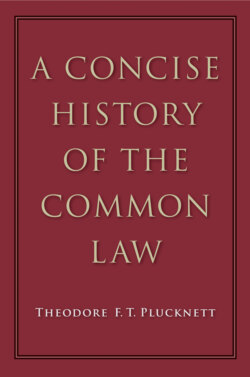Читать книгу A Concise History of the Common Law - Theodore F. T. Plucknett - Страница 88
На сайте Литреса книга снята с продажи.
THE COUNTY COURT
ОглавлениеWe now come to the county court, or “county” as it was more simply called, for it must be remembered that in the early Norman period administration and adjudication were still not separated, and there was hardly need for the word “court”—even when the word does occur it does not necessarily bear the modern meaning of an organ of justice. The shire is the most ancient of English institutions. Many of the individual counties are directly descended from the ancient Anglo-Saxon kingdoms of the age when the land was divided into numerous petty realms. In such cases as this the shire moot was the direct representative of the national assembly of a once independent kingdom, and for a time was presided over by an alderman, who was sometimes a member of the ancient royal family. It seems that some other counties, however, are of later origin and were deliberately erected as units of provincial government in imitation of the place which the ancient county now occupied in a united England. The history of the county falls into two periods; in the first the Crown is endeavouring to secure complete control over the county organisation; in the second, that control having been acquired, we see the steady decline of the county in practical importance.3 The original jurisdiction of the county was once limitless both in kind and in degree. The county was the greater and more solemn body, but it was not “superior” to the hundred in the modern sense of the word: decisions of the hundred, for example, were not subject to review in the county, and the county, like the hundred, was a court of first instance. In Anglo-Saxon times the shire-moot was an impressive assembly of all the greatest people of the shire who met in order to transact all the functions of government. There are surviving charters which testify to the fact that some of that business was judicial, but both before and after the conquest all sorts of administrative duties were performed in the shire or county, as well as those more distinctly judicial functions which entitle it to be described as a court.1
The county came to exercise two jurisdictions, and the method appropriate to each is well worth study, for it illustrates the difference between ancient courts and modern ones.
